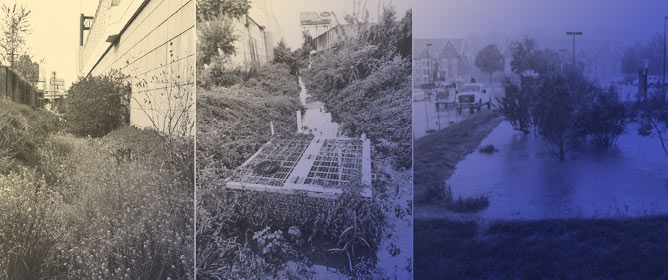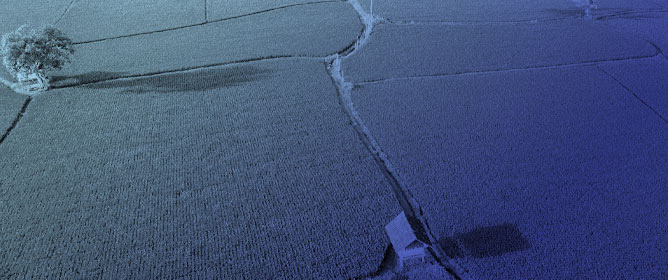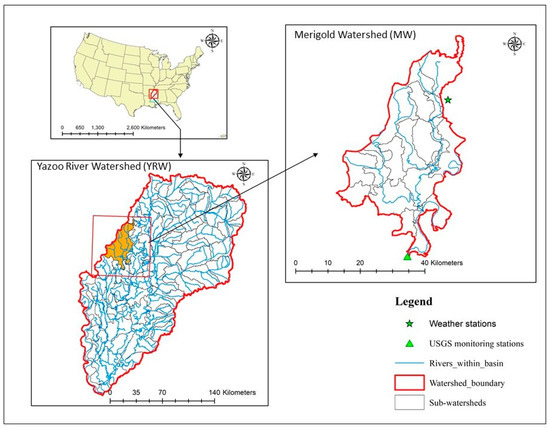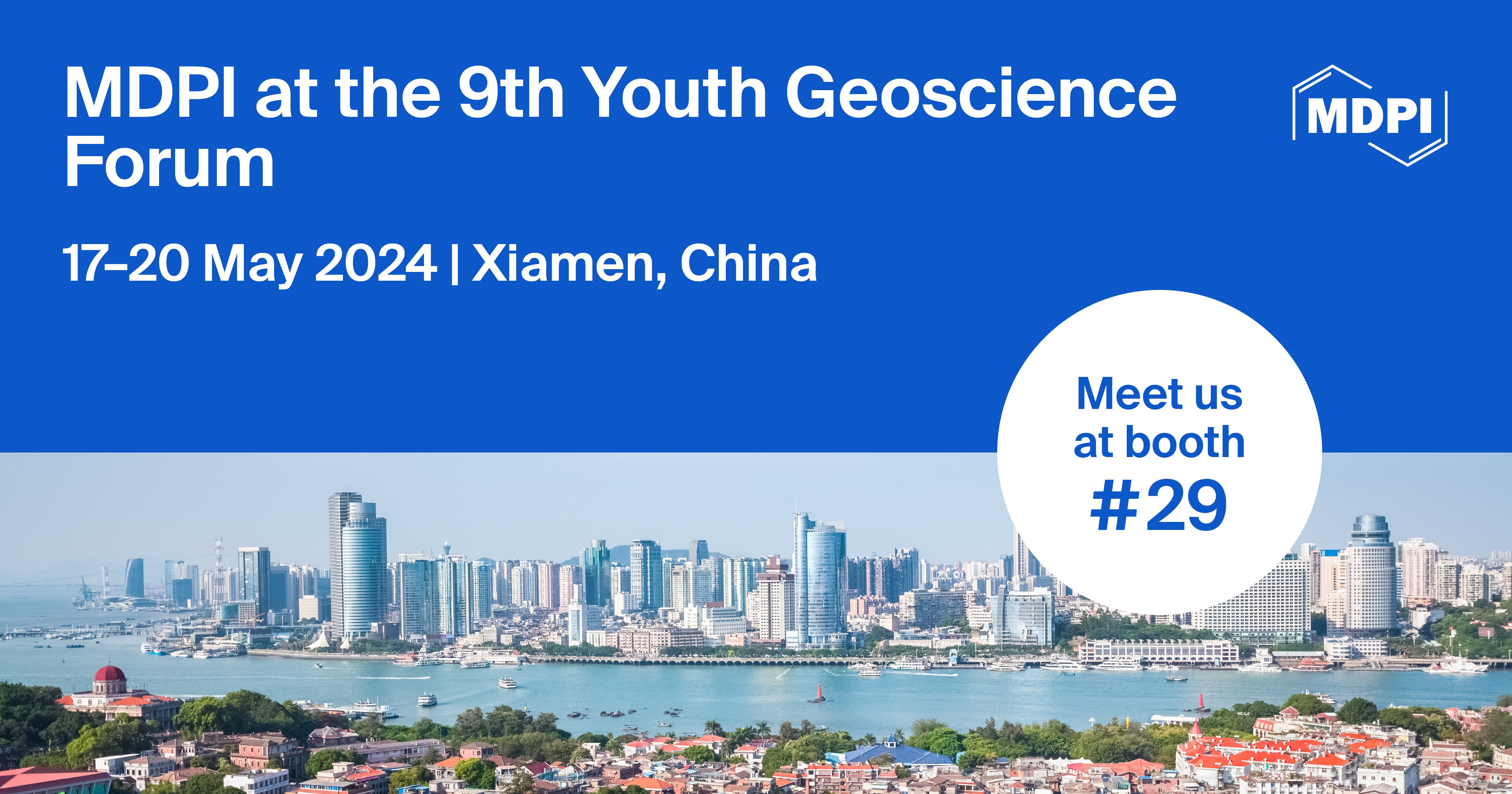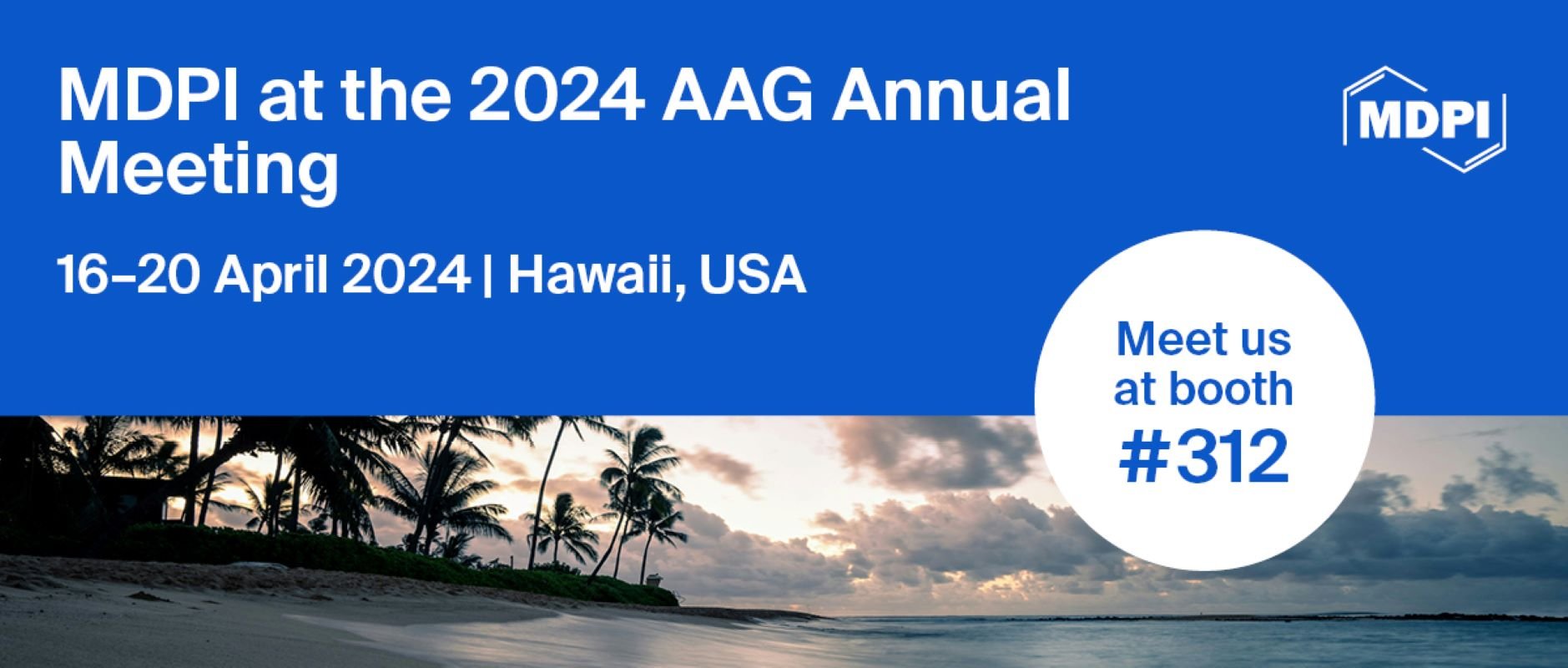Journal Description
Hydrology
Hydrology
is an international, peer-reviewed, open access journal on hydrology published monthly online by MDPI. The American Institute of Hydrology (AIH) and Japanese Society of Physical Hydrology (JSPH) are affiliated with Hydrology and their members receive discounts on the article processing charges.
- Open Access— free for readers, with article processing charges (APC) paid by authors or their institutions.
- High Visibility: indexed within Scopus, ESCI (Web of Science), PubAg, GeoRef, and other databases.
- Journal Rank: CiteScore - Q2 (Earth-Surface Processes)
- Rapid Publication: manuscripts are peer-reviewed and a first decision is provided to authors approximately 17.8 days after submission; acceptance to publication is undertaken in 2.8 days (median values for papers published in this journal in the second half of 2023).
- Recognition of Reviewers: reviewers who provide timely, thorough peer-review reports receive vouchers entitling them to a discount on the APC of their next publication in any MDPI journal, in appreciation of the work done.
Impact Factor:
3.2 (2022);
5-Year Impact Factor:
3.1 (2022)
Latest Articles
Evaluating Best Management Practice Efficacy Based on Seasonal Variability and Spatial Scales
Hydrology 2024, 11(4), 58; https://doi.org/10.3390/hydrology11040058 (registering DOI) - 20 Apr 2024
Abstract
Implementing best management practices (BMPs) has proven to be an efficient method for reducing non-point source (NPS) pollutants. Agricultural NPS pollution is considered to be a major contributor to water quality impairment. This study aims to assess the variation in hydrologic and water
[...] Read more.
Implementing best management practices (BMPs) has proven to be an efficient method for reducing non-point source (NPS) pollutants. Agricultural NPS pollution is considered to be a major contributor to water quality impairment. This study aims to assess the variation in hydrologic and water quality outputs at field and watershed scales when BMPs are implemented using modeling approaches. The Yazoo River Watershed (YRW) is the largest watershed basin in the state of Mississippi with approximately 50% agricultural land. Runoff generated from agricultural areas carries sediments and nutrients. The Merigold watershed (MW) is a sub-basin of the YRW and a field-scale watershed with most of the land use being agriculture. It is essential to quantify the streamflow, sediment, total nitrogen (TN), and total phosphorus (TP) when BMPs are implemented. BMPs such as vegetative filter strips (VFS) and cover crops (CC) were tested in this study. The Soil and Water Assessment Tool (SWAT) model was applied to quantify the watershed’s hydrologic and water quality outputs. SWAT model accuracy assessment was performed by calibration and validation process using the Nash and Sutcliffe Efficiency Index (NSE). Model performance was satisfactory for monthly streamflow, with NSE values in the range of 0.62 to 0.81, and for daily sediments, TN, and TP load estimation, with NSE values of 0.21, 0.20, and 0.47, respectively. CC was planted after harvesting the main crop. Therefore, it is essential to quantify the seasonal reduction in pollutants. Water quality was improved after BMP implementation, and an overall decrease in streamflow, sediment, TN, and TP loads was observed for both MW and YRW during dry and wet seasons. Previous studies regarding seasonal assessments with CC implementation in the MW and YRW were limited. Therefore, the results from this study could be a unique addition to the scientific literature.
Full article
(This article belongs to the Special Issue Hydrological Processes in Agricultural Watersheds)
►
Show Figures
Open AccessArticle
Influence of Floodplain Forest Structure on Overbank Sediment and Phosphorus Deposition in an Agriculturally Dominated Watershed in Iowa, USA
by
Sierra Geer, William Beck, Emily Zimmerman and Richard Schultz
Hydrology 2024, 11(4), 57; https://doi.org/10.3390/hydrology11040057 - 19 Apr 2024
Abstract
This study sought to estimate the potential impact of floodplain forest vegetation on sediment and phosphorus loading along the Iowa River in Iowa, USA. Thirty monitoring plots were established in forested conservation easements and similar public land along the Iowa River within the
[...] Read more.
This study sought to estimate the potential impact of floodplain forest vegetation on sediment and phosphorus loading along the Iowa River in Iowa, USA. Thirty monitoring plots were established in forested conservation easements and similar public land along the Iowa River within the spatial extent of the two-, five-, and ten-year-flood return intervals. Within these plots, we examined the structure and cover of ground and overstory vegetation, as well as related metrics. Historic sediment and phosphorus fluxes were determined using a combination of sediment core extraction and tree ring analysis. The results show that deposition rates weakly correlate with tall grass and tall, medium, and short forb categories in the springtime but correlate with only short and medium grass and forb categories in late summer. Soil phosphorus concentration correlated weakly with overstory forest characteristics and springtime grass cover. Distance from the channel was negatively correlated with deposition. Overall, 4 to 50% (median = 15.5%) of the annual sediment load is represented by the deposition in adjacent floodplain forests. This study demonstrates the potential importance of floodplain easement forest vegetation in contributing to sediment and phosphorus attenuation during flood events.
Full article
(This article belongs to the Special Issue Advances in River and Floodplain Interactions)
►▼
Show Figures
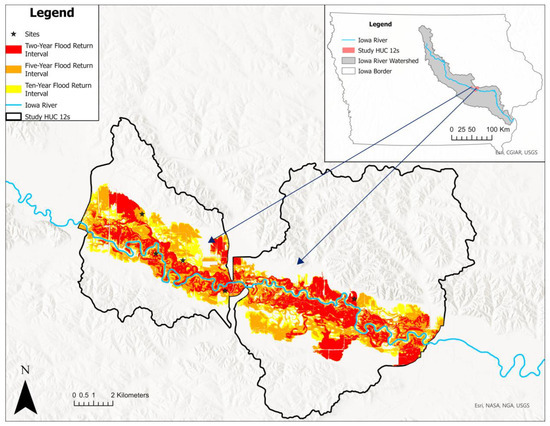
Figure 1
Open AccessArticle
Bark Morphology and Nutrient Flux in Urban Trees: Investigating Water Absorption and Ion Concentration Dynamics
by
Marcelle Teodoro Lima, Manuel Enrique Gamero Guandique and Kelly Cristina Tonello
Hydrology 2024, 11(4), 56; https://doi.org/10.3390/hydrology11040056 - 17 Apr 2024
Abstract
Urban trees play a pivotal role in mediating the hydrological and nutrient cycles within urban ecosystems, yet the mechanisms by which bark characteristics influence these processes remain underexplored. This study aimed to investigate the impact of the bark morphology—specifically texture, depth, and number
[...] Read more.
Urban trees play a pivotal role in mediating the hydrological and nutrient cycles within urban ecosystems, yet the mechanisms by which bark characteristics influence these processes remain underexplored. This study aimed to investigate the impact of the bark morphology—specifically texture, depth, and number of furrows—on the water absorption capacity and to determine the relationship between this capacity and ion concentration in stemflow across various urban tree species. Our findings reveal significant variations in water absorption and ion concentration related to the morphological traits of bark among tree species, highlighting the intricate relationship between bark physical and chemical characteristics and stemflow nutrient composition. Notably, species with furrowed textures, greater depth, and a higher number of furrows demonstrated pronounced differences in ion enrichment in their stemflow. However, a canonical redundancy analysis suggested a low association between bark absorption capacity and ion concentration, indicating the influence of other, possibly external, environmental factors on ion leaching. The results underscore the complexity of nutrient transport mechanisms in urban trees and show a new understanding of tree bark’s ecohydrological roles. This study contributes valuable insights into ecohydrology science and emphasizes the need for further research to unravel the multifaceted influences on nutrient dynamics in urban landscapes.
Full article
(This article belongs to the Special Issue Forest Hydrometeorology)
►▼
Show Figures

Figure 1
Open AccessArticle
Integrated Exploitation of Rainwater and Groundwater: A Strategy for Water Self-Sufficiency in Ca Mau Province of the Mekong Delta
by
Dang Hoa Vinh, Dung Duc Tran, Dao Dinh Cham, Phan Thi Thanh Hang, Duong Ba Man, Danh Mon, Luu Hai Tung, Le Van Kiem, Thien Duc Nguyen and Duong Thi Ngoc Tuyen
Hydrology 2024, 11(4), 55; https://doi.org/10.3390/hydrology11040055 - 12 Apr 2024
Abstract
Groundwater sources have been exploited excessively for numerous purposes worldwide, leading to increasingly severe depletion. However, the replenishment of groundwater sources has not usually been a focus in economically and socially underdeveloped countries and regions. In coastal provinces of the Vietnamese Mekong Delta
[...] Read more.
Groundwater sources have been exploited excessively for numerous purposes worldwide, leading to increasingly severe depletion. However, the replenishment of groundwater sources has not usually been a focus in economically and socially underdeveloped countries and regions. In coastal provinces of the Vietnamese Mekong Delta (VMD), rural areas are facing difficulties in accessing fresh water due to shortages from the water supply plant and excessive use of groundwater, highlighting an urgent need for sustainable development solutions. Our study first conducted interviews with 200 households in Ca Mau Province of the VMD to identify the current situation and the challenges and obstacles of rainwater harvesting and to find sustainable and proactive solutions. We then analyzed daily rainfall data from 10 meteorological stations to construct four scenarios of the water balance method: (i) potential rainwater harvesting based on existing roof area; (ii) optimal scale of storage tank and catchments for different levels of water usage; (iii) tank scale utilizing rainwater entirely during the rainy season and basic needs during the dry season; and (iv) integrated water supply between rain and groundwater. The results showed that using rainwater entirely for domestic water supply requires large storage tank capacities, making these scenarios difficult to achieve in the near future. Our research introduces a novel integrated water supply approach to storing rain and groundwater that has demonstrated high effectiveness and sustainability. With existing tank capacities (0.8 m3 per person), rainwater could only meet over 48% (14 m3 per year) of the water demand while requiring 14.8 m3 of additional groundwater extraction. With a tank capacity of 2.4 m3 per person, ensuring rainwater harvesting meets basic demand, harvested rainwater could satisfy 64% of the demand, with artificial groundwater supplementation exceeding 1.79 times the required extraction, while excess rainwater discharge into the environment would be minimal. Our research results not only provide potential solutions for rainwater and groundwater collection to supplement sustainable domestic water sources for Ca Mau but also serve as an example for similar regions globally.
Full article
(This article belongs to the Special Issue Editorial Board Members’ Collection Series: Integrated Surface Water and Groundwater Resources Management)
►▼
Show Figures

Figure 1
Open AccessArticle
Channel Morphology Change after Restoration: Drone Laser Scanning versus Traditional Surveying Techniques
by
Jonathan P. Resop, Coral Hendrix, Theresa Wynn-Thompson and W. Cully Hession
Hydrology 2024, 11(4), 54; https://doi.org/10.3390/hydrology11040054 - 10 Apr 2024
Abstract
►▼
Show Figures
Accurate and precise measures of channel morphology are important when monitoring a stream post-restoration to determine changes in stability, water quality, and aquatic habitat availability. Practitioners often rely on traditional surveying methods such as a total station for measuring channel metrics (e.g., cross-sectional
[...] Read more.
Accurate and precise measures of channel morphology are important when monitoring a stream post-restoration to determine changes in stability, water quality, and aquatic habitat availability. Practitioners often rely on traditional surveying methods such as a total station for measuring channel metrics (e.g., cross-sectional area, width, depth, and slope). However, these methods have limitations in terms of coarse sampling densities and time-intensive field efforts. Drone-based lidar or drone laser scanning (DLS) provides much higher resolution point clouds and has the potential to improve post-restoration monitoring efforts. For this study, a 1.3-km reach of Stroubles Creek (Blacksburg, VA, USA), which underwent a restoration in 2010, was surveyed twice with a total station (2010 and 2021) and twice with DLS (2017 and 2021). The initial restoration was divided into three treatment reaches: T1 (livestock exclusion), T2 (livestock exclusion and bank treatment), and T3 (livestock exclusion, bank treatment, and inset floodplain). Cross-sectional channel morphology metrics were extracted from the 2021 DLS scan and compared to metrics calculated from the 2021 total station survey. DLS produced 6.5 times the number of cross sections over the study reach and 8.8 times the number of points per cross section compared to the total station. There was good agreement between the metrics derived from both surveying methods, such as channel width (R2 = 0.672) and cross-sectional area (R2 = 0.597). As a proof of concept to demonstrate the advantage of DLS over traditional surveying, 0.1 m digital terrain models (DTMs) were generated from the DLS data. Based on the drone lidar data, from 2017 to 2021, treatment reach T3 showed the most stability, in terms of the least change and variability in cross-sectional metrics as well as the least erosion area and volume per length of reach.
Full article
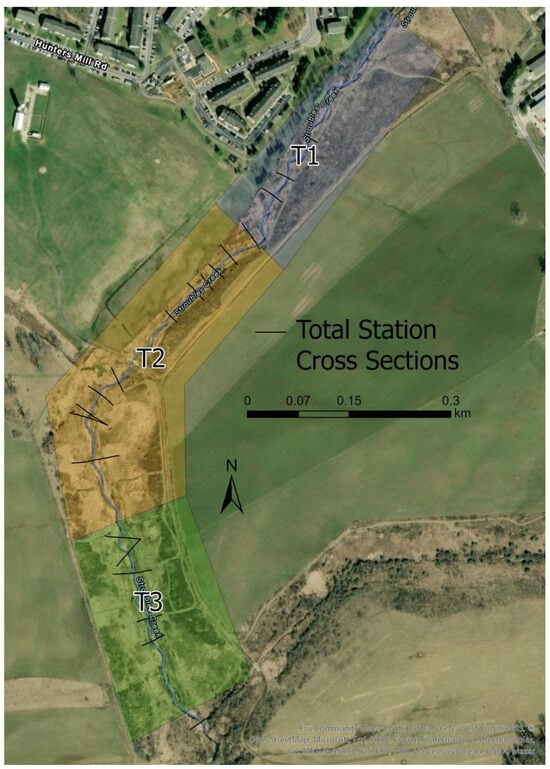
Figure 1
Open AccessArticle
Features of the Distribution of Beaver Dams and Ponds along Small Rivers: The Volga-Kama Region, European Russia
by
Artyom V. Gusarov, Aidar G. Sharifullin, Achim A. Beylich and Fedor N. Lisetskii
Hydrology 2024, 11(4), 53; https://doi.org/10.3390/hydrology11040053 - 09 Apr 2024
Abstract
In this paper, by using GNSS technologies, some features of the distribution and some morphometric parameters of dams and ponds created by the Eurasian beaver (Castor fiber L.) along ten rivers of the Volga-Kama region of European Russia were identified. Detected features
[...] Read more.
In this paper, by using GNSS technologies, some features of the distribution and some morphometric parameters of dams and ponds created by the Eurasian beaver (Castor fiber L.) along ten rivers of the Volga-Kama region of European Russia were identified. Detected features depend on the geomorphological, lithological, and landscape features of these rivers and their basins. The significant role of river slopes, as well as landscape zoning, in the distribution of beaver dams and ponds along small rivers in the study region is shown. In the rivers under study, almost all beaver constructions are located on riverbed slopes of less than 3% (most often, less than 2%). In the south of the forest zone (the southern taiga of the Vyatka River basin), the majority of dams and ponds (about 90%) are located on slopes of less than 1%, while, within the uplands of the forest-steppe zone, this location varies depending on the length of the rivers. In general, the greater the average slope of the river (the greater the average elevation of the river basin), the lower, other things being equal, the degree of beaver transformation of such rivers. This feature is better expressed in the rivers of the forest landscape zone and less expressed in the rivers flowing in the forest-steppe zone. Analysis of the morphometric parameters of beaver dams shows statistically significant trends towards an increase in their average height, as the channel slopes increase. Statistically significant trends were also identified towards a decrease in the length of dams and the length of associated ponds, with an increase in channel slopes. It is noteworthy that the critical values of the slope for a statistically significant and relatively sharp change in these parameters are 1.45%, 1.07 (or 0.54)%, and 0.65 (or 0.47)%, respectively. The greatest average heights of beaver dams are confined to those rivers where their basins are composed of loamy rocks/soils (especially those that are poorly plowed), compared with “sandy” river basins. This may be due to the peculiarities of the ratio of surface and underground water runoff in these basins and, as a consequence, different intensities of snowmelt- and rainfall-induced flood flow. We assume that the above-mentioned features reflect the early stages of beaver expansion (population growth) in the studied rivers.
Full article
(This article belongs to the Special Issue Current Status and Future Prospects of Hydromorphological Assessment of Rivers)
►▼
Show Figures

Figure 1
Open AccessArticle
Hydrodynamic Modeling and Comprehensive Assessment of Pier Scour Depth and Rate Induced by Wood Debris Accumulation
by
Muhanad Al-Jubouri and Richard P. Ray
Hydrology 2024, 11(4), 52; https://doi.org/10.3390/hydrology11040052 - 09 Apr 2024
Abstract
►▼
Show Figures
This study mainly investigates the impact of debris accumulation on scour depth and scour hole characteristics around bridge piers. Through controlled experiments with uniform sand bed material, the influence of various debris shapes (high wedge, low wedge, triangle yield, rectangular, triangle bow, and
[...] Read more.
This study mainly investigates the impact of debris accumulation on scour depth and scour hole characteristics around bridge piers. Through controlled experiments with uniform sand bed material, the influence of various debris shapes (high wedge, low wedge, triangle yield, rectangular, triangle bow, and half-cylinder), upstream debris length, downstream debris extension, and debris thickness on scour depth and scour hole area and volume around the cylindrical pier were analyzed. The findings revealed that the shape and location of debris in the water column upstream of piers are key factors that determine the depth of scour, with high wedge shapes inducing the deepest scour and potentially the largest scour hole, particularly when positioned close to the pier and fully submerged. Scenarios in which triangle bow debris was submerged at full depth upstream of the pier closely resembled situations devoid of debris. Conversely, debris extension downstream of the pier was found to reduce local scour depth while concurrently enlarging the dimensions of the scour hole. The existing scour prediction equations tend to overestimate scour depth in scenarios involving debris, particularly when applying effective and equivalent pier width. This discrepancy arises because these equations were originally developed to predict scour depth around piers in the absence of debris. In response, a refined model for predicting scour induced by debris was proposed, integrating factors such as upstream debris length, downstream extension, obstruction percentage, and debris shape factor. This model demonstrated strong agreement with experimental data within the scope of this study and underwent further validation using additional experimental datasets from other research endeavors. In conclusion, this experimental study advances the comprehension of scour processes around cylindrical bridge piers, providing valuable insights into the role of debris characteristics and positioning.
Full article

Figure 1
Open AccessArticle
Integrated Hydrological and Hydrochemical Analysis of Arsenic and Iron Behavior in Waters of a Decommissioned Tin Mine in Ehrenfriedersdorf, Germany
by
Viktoria Rafique, Marlies Grimmer, Florian Scheermann, Marco Roscher and Nils Hoth
Hydrology 2024, 11(4), 51; https://doi.org/10.3390/hydrology11040051 - 08 Apr 2024
Abstract
►▼
Show Figures
Arsenic contamination poses significant challenges to environmental and public health, with mining activities contributing to its wider distribution. This study investigates the fate of arsenic and iron in mine waters at a decommissioned tin mine, now a visitor mine, located in Ehrenfriedersdorf, Germany,
[...] Read more.
Arsenic contamination poses significant challenges to environmental and public health, with mining activities contributing to its wider distribution. This study investigates the fate of arsenic and iron in mine waters at a decommissioned tin mine, now a visitor mine, located in Ehrenfriedersdorf, Germany, situated in the Free State of Saxony. Despite the general shortage of data, which is common for old mining sites, we explored the complex interplay of climatic conditions, hydrological processes, and arsenic and iron behavior in the mine waters through a comprehensive approach encompassing general site characterization, mine water monitoring, and analysis of local weather data. Over a period of three years, we conducted 14 sampling campaigns, collecting a total of 95 water samples, each consisting of three filtration subsamples, resulting in the analysis of 285 water samples. These samples were collected both aboveground and underground. Aboveground samples included mine outflows, a tailing outflow, and an adjacent creek, while underground sampling points were scattered throughout the mine initially and later focused on the identified “main” mine water system. The chemical data from the analyses were correlated with local climatic water balances to reveal distinctive patterns in arsenic and iron concentrations at various locations within the mine system. Our findings shed light on the hydrological behavior of the mine, helping to elucidate the impact of precipitation and potential evapotranspiration on arsenic and iron concentrations in a tailing outflow, in the flooded mine body, and at the portal of the main dewatering gallery. Our findings emphasize the importance of sustained monitoring and the utilization of local weather data to comprehend metalloid and metal contamination risks in similar mining environments.
Full article
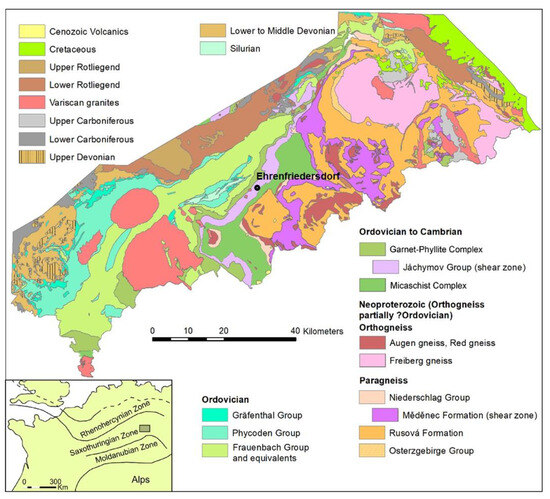
Figure 1
Open AccessArticle
A Spatiotemporal Assessment of the Precipitation Variability and Pattern and an Evaluation of the Predictive Reliability, of Global Climate Models over Bihar
by
Ahmad Rashiq, Vishwajeet Kumar and Om Prakash
Hydrology 2024, 11(4), 50; https://doi.org/10.3390/hydrology11040050 - 08 Apr 2024
Abstract
Climate change is significantly altering precipitation patterns, leading to spatiotemporal changes throughout the world. In particular, the increased frequency and intensity of extreme weather events, leading to heavy rainfall, floods, and droughts, have been a cause of concern. A comprehensive understanding of these
[...] Read more.
Climate change is significantly altering precipitation patterns, leading to spatiotemporal changes throughout the world. In particular, the increased frequency and intensity of extreme weather events, leading to heavy rainfall, floods, and droughts, have been a cause of concern. A comprehensive understanding of these changes in precipitation patterns on a regional scale is essential to enhance resilience against the adverse effects of climate change. The present study, focused on the state of Bihar in India, uses a long-term (1901–2020) gridded precipitation dataset to analyze the effect of climate change. Change point detection tests divide the time series into two epochs: 1901–1960 and 1961–2020, with 1960 as the change point year. Modified Mann–Kendall (MMK) and Sen’s slope estimator tests are used to identify trends in seasonal and annual time scales, while Centroidal Day (CD) analysis is performed to determine changes in temporal patterns of rainfall. The results show significant variability in seasonal rainfall, with the nature of pre-monsoon and post-monsoon observed to have flipped in second epoch. The daily rainfall intensity during the monsoon season has increased considerably, particularly in north Bihar, while the extreme rainfall has increased by 60.6 mm/day in the second epoch. The surface runoff increased by approximately 13.43% from 2001 to 2020. Further, 13 Global Climate Models (GCMs) evaluate future scenarios based on Shared Socioeconomic Pathways (SSP) 370 and SSP585. The suitability analysis of these GCMs, based on probability density function (PDF), monthly mean absolute error (MAE), root mean square error (RMSE) and percentage bias (P-Bias), suggests that EC-Earth3-Veg-LR, MIROC6, and MPI-ESM1-2-LR are the three best GCMs representative of rainfall in Bihar. A Bayesian model-averaged (BMA) multi-model ensemble reflects the variability expected in the future with the least uncertainty. The present study’s findings clarify the current state of variability, patterns and trends in precipitation, while suggesting the most appropriate GCMs for better decision-making and preparedness.
Full article
(This article belongs to the Special Issue Editorial Board Members’ Collection Series: The Flood Estimation and Forecasting Chain: Meteorological–Hydrological–Hydraulic Forecasts and Predictive Uncertainty towards Operational Decisions)
►▼
Show Figures
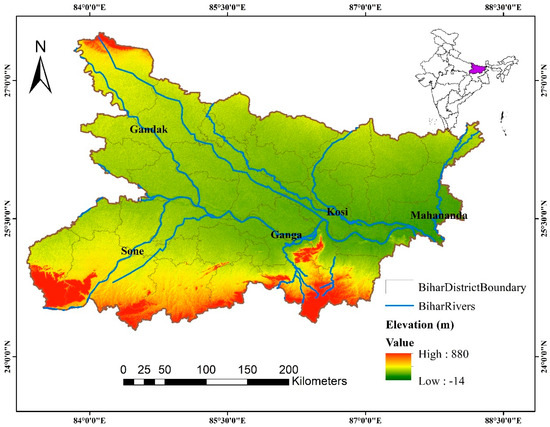
Figure 1
Open AccessArticle
Climatic Modeling of Seawater Intrusion in Coastal Aquifers: Understanding the Climate Change Impacts
by
Aikaterini Lyra, Athanasios Loukas, Pantelis Sidiropoulos and Nikitas Mylopoulos
Hydrology 2024, 11(4), 49; https://doi.org/10.3390/hydrology11040049 - 06 Apr 2024
Abstract
The study examines the impacts of climate change and sea level rise on coastal aquifers, focusing on the influence of the components of the water cycle on seawater intrusion, and the evolution of the phenomenon in the future. The simulation of coastal water
[...] Read more.
The study examines the impacts of climate change and sea level rise on coastal aquifers, focusing on the influence of the components of the water cycle on seawater intrusion, and the evolution of the phenomenon in the future. The simulation of coastal water resources was performed using an integrated modeling system (IMS), designed for agricultural coastal watersheds, which consists of inter-connected models of surface hydrology (UTHBAL), groundwater hydrology (MODFLOW), and seawater intrusion (SEAWAT). Climatic models for the adverse impact scenario (RCP8.5) and the medium impact scenario (RCP4.5) of climate change were used. Transient boundary head conditions were set to the coastal boundary, to dynamically represent the rise in sea level due to climate change. The response of groundwater in the coastal Almyros Basin, located in central Greece, was simulated from 1991 to 2100. The findings indicate that seawater intrusion will be advanced in the future, in both climate change scenarios. The models show varying patterns in groundwater recharge, with varying uncertainty projected into the future, and sensitivity to time in the fluctuation of the components of the water cycle.
Full article
(This article belongs to the Special Issue Groundwater Pollution: Sources, Mechanisms, and Prevention)
►▼
Show Figures
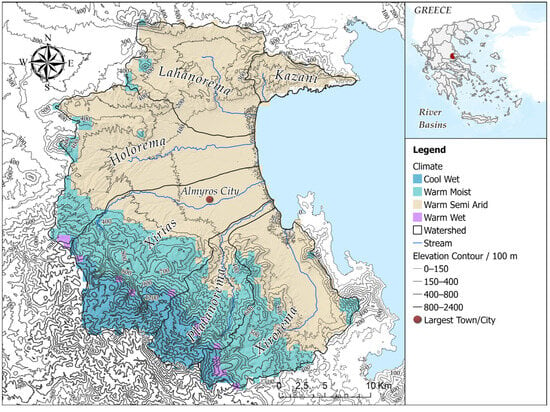
Figure 1
Open AccessArticle
Utilizing Hybrid Machine Learning Techniques and Gridded Precipitation Data for Advanced Discharge Simulation in Under-Monitored River Basins
by
Reza Morovati and Ozgur Kisi
Hydrology 2024, 11(4), 48; https://doi.org/10.3390/hydrology11040048 - 04 Apr 2024
Abstract
This study addresses the challenge of utilizing incomplete long-term discharge data when using gridded precipitation datasets and data-driven modeling in Iran’s Karkheh basin. The Multilayer Perceptron Neural Network (MLPNN), a rainfall-runoff (R-R) model, was applied, leveraging precipitation data from the Asian Precipitation—Highly Resolved
[...] Read more.
This study addresses the challenge of utilizing incomplete long-term discharge data when using gridded precipitation datasets and data-driven modeling in Iran’s Karkheh basin. The Multilayer Perceptron Neural Network (MLPNN), a rainfall-runoff (R-R) model, was applied, leveraging precipitation data from the Asian Precipitation—Highly Resolved Observational Data Integration Toward Evaluation (APHRODITE), Global Precipitation Climatology Center (GPCC), and Climatic Research Unit (CRU). The MLPNN was trained using the Levenberg–Marquardt algorithm and optimized with the Non-dominated Sorting Genetic Algorithm-II (NSGA-II). Input data were pre-processed through principal component analysis (PCA) and singular value decomposition (SVD). This study explored two scenarios: Scenario 1 (S1) used in situ data for calibration and gridded dataset data for testing, while Scenario 2 (S2) involved separate calibrations and tests for each dataset. The findings reveal that APHRODITE outperformed in S1, with all datasets showing improved results in S2. The best results were achieved with hybrid applications of the S2-PCA-NSGA-II for APHRODITE and S2-SVD-NSGA-II for GPCC and CRU. This study concludes that gridded precipitation datasets, when properly calibrated, significantly enhance runoff simulation accuracy, highlighting the importance of bias correction in rainfall-runoff modeling. It is important to emphasize that this modeling approach may not be suitable in situations where a catchment is undergoing significant changes, whether due to development interventions or the impacts of anthropogenic climate change. This limitation highlights the need for dynamic modeling approaches that can adapt to changing catchment conditions.
Full article
(This article belongs to the Special Issue The 10th Anniversary of Hydrology: Inaugurating a New Research Decade)
►▼
Show Figures
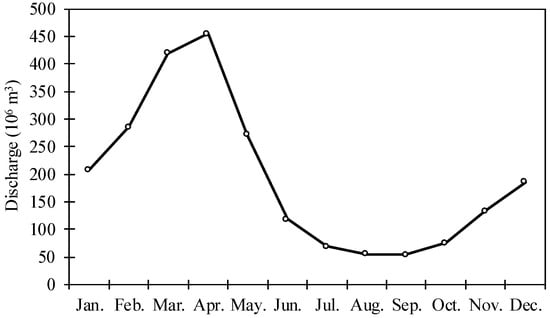
Figure 1
Open AccessArticle
Fuzzy Finite Elements Solution Describing Recession Flow in Unconfined Aquifers
by
Christos Tzimopoulos, Kyriakos Papadopoulos, Nikiforos Samarinas, Basil Papadopoulos and Christos Evangelides
Hydrology 2024, 11(4), 47; https://doi.org/10.3390/hydrology11040047 - 30 Mar 2024
Abstract
►▼
Show Figures
In this work, a novel fuzzy FEM (Finite Elements Method) numerical solution describing the recession flow in unconfined aquifers is proposed. In general, recession flow and drainage problems can be described by the nonlinear Boussinesq equation, while the introduced hydraulic parameters (Conductivity K
[...] Read more.
In this work, a novel fuzzy FEM (Finite Elements Method) numerical solution describing the recession flow in unconfined aquifers is proposed. In general, recession flow and drainage problems can be described by the nonlinear Boussinesq equation, while the introduced hydraulic parameters (Conductivity K and Porosity S) present significant uncertainties for various reasons (e.g., spatial distribution, human errors, etc.). Considering the general lack of in situ measurements for these parameters as well as the certain spatial variability that they present in field scales, a fuzzy approach was adopted to include the problem uncertainties and cover the disadvantage of ground truth missing data. The overall problem is encountered with a new approximate fuzzy FEM numerical solution, leading to a system of crisp boundary value problems. To prove the validity and efficiency of the new fuzzy FEM, a comparative analysis between the proposed approach and other well-known and tested approximations was carried out. According to the results, the proposed FEM numerical solution agrees with Karadinumerical method for the crisp case and is in close agreement with the original analytical solution proposed by Boussinesq in 1904 with the absolute reduced error to be 4.6‰. Additionally, the possibility theory is applied, enabling the engineers and designers of irrigation, drainage, and water resources projects to gain knowledge of hydraulic properties (e.g., water level, outflow volume) and make the right decisions for rational and productive engineering studies.
Full article
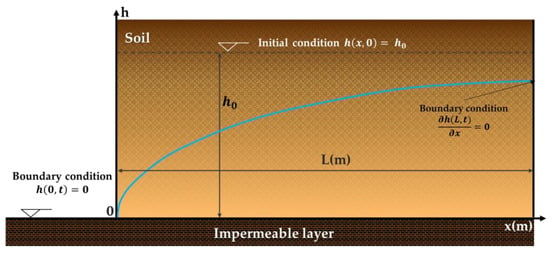
Figure 1
Open AccessArticle
Analysis of the Impact of Hydraulic Gates on a Stabilized Tidal Inlet Structure: Mathematical Model and Data Measurements
by
Alfonso Arrieta-Pastrana, Oscar E. Coronado-Hernández and Vicente S. Fuertes-Miquel
Hydrology 2024, 11(4), 46; https://doi.org/10.3390/hydrology11040046 - 29 Mar 2024
Abstract
►▼
Show Figures
Tidal inlet structures are engineering projects with associated benefits related to flood control, water quality enhancement, and coastal protection. This study analyzes the performance of hydraulic gates on a stabilized inlet in estuarine systems by developing a simplified hydraulic model that considers inlet
[...] Read more.
Tidal inlet structures are engineering projects with associated benefits related to flood control, water quality enhancement, and coastal protection. This study analyzes the performance of hydraulic gates on a stabilized inlet in estuarine systems by developing a simplified hydraulic model that considers inlet and outlet water levels. The proposed model was applied to the stabilized tidal inlet structure in Cartagena de Indias, Colombia. This model offers a practical tool for engineers and designers operating estuarine systems. The analysis focuses on the coastal lagoon of Ciénaga de la Virgen. The proposed model was successfully calibrated using two water sensors, with extreme input and outlet flow rates of approximately 260 m3/s and 110 m3/s, respectively. The average daily output volume in the system is 3,361,000 m3, while the average daily input volume is 3,200,000 m3. Consequently, the manipulation of the opening gates results in a decrease in the estuarine water level, potentially by as much as 25 cm, which local authorities can use to make decisions to reduce extreme water levels during flooding events.
Full article

Figure 1
Open AccessArticle
Evaluation of the Impact of Climate Change on the Water Balance of the Mixteco River Basin with the SWAT Model
by
Gerardo Colín-García, Enrique Palacios-Vélez, Adolfo López-Pérez, Martín Alejandro Bolaños-González, Héctor Flores-Magdaleno, Roberto Ascencio-Hernández and Enrique Inoscencio Canales-Islas
Hydrology 2024, 11(4), 45; https://doi.org/10.3390/hydrology11040045 - 28 Mar 2024
Abstract
Assessing the impact of climate change is essential for developing water resource management plans, especially in areas facing severe issues regarding ecosystem service degradation. This study assessed the effects of climate change on the hydrological balance using the SWAT (Soil and Water Assessment
[...] Read more.
Assessing the impact of climate change is essential for developing water resource management plans, especially in areas facing severe issues regarding ecosystem service degradation. This study assessed the effects of climate change on the hydrological balance using the SWAT (Soil and Water Assessment Tool) hydrological model in the Mixteco River Basin (MRB), Oaxaca, Mexico. Temperature and precipitation were predicted with the projections of global climate models (GCMs) from the Coupled Model Intercomparison Project Phase 6 (CMIP6); the bias was corrected using CMhyd software, and then the best performing GCM was selected for use in the SWAT model. According to the GCM MPI-ESM1-2-LR, precipitation might decrease by between 83.71 mm and 225.83 mm, while temperature might increase by between 2.57 °C and 4.77 °C, causing a greater atmospheric evaporation demand that might modify the hydrological balance of the MRB. Water yield might decrease by 47.40% and 61.01% under the climate scenarios SP245 and SSP585, respectively. Therefore, adaptation and mitigation measures are needed to offset the adverse impact of climate change in the MRB.
Full article
(This article belongs to the Special Issue Climate Change Impacts on Streamflow: Hydrological Dynamics and Water Quality)
►▼
Show Figures
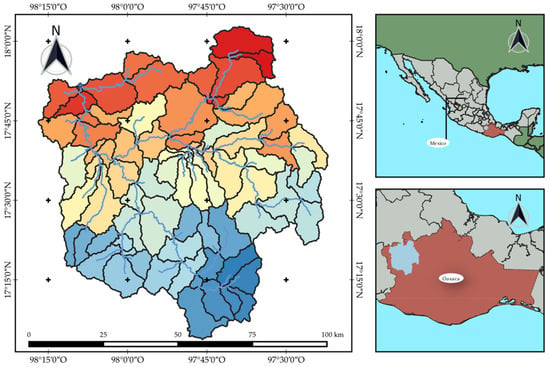
Figure 1
Open AccessArticle
Development of Green Disaster Management Toolkit to Achieve Carbon Neutrality Goals in Flood Risk Management
by
Tae Sung Cheong and Sangman Jeong
Hydrology 2024, 11(4), 44; https://doi.org/10.3390/hydrology11040044 - 26 Mar 2024
Abstract
Current flood risk management projects have been criticized for their high carbon emissions, raising the need for carbon emission reduction and carbon absorption efforts to mitigate environmental impacts and achieve carbon neutrality goals. The research develops a comprehensive green disaster risk management toolkit
[...] Read more.
Current flood risk management projects have been criticized for their high carbon emissions, raising the need for carbon emission reduction and carbon absorption efforts to mitigate environmental impacts and achieve carbon neutrality goals. The research develops a comprehensive green disaster risk management toolkit to calculate the carbon emissions and absorption quantitatively based on the unit volume of materials and processes employed in a flood risk management project. As a result of applying the developed toolkit to a about 22,300 small stream restoration projects in Korea, the total carbon emissions were estimated to be 1,158,840.7 tons of CO2, of which 89.4% of the total carbon emissions originated from concrete-related construction activities, such as cement and ready-mixed concrete pouring. As a result of evaluating the nationwide carbon absorption results of all small stream restoration projects, total absorption by 2030 is expected to be 3.0 to 10.2 times higher than carbon emissions. The comprehensive toolkits are expected to support the selection of customized processes, materials, and methods by providing a systematic approach to calculate and minimize carbon emissions, ultimately contributing to the achievement of carbon neutrality goals in flood risk management projects.
Full article
(This article belongs to the Special Issue Editorial Board Members’ Collection Series: The Flood Estimation and Forecasting Chain: Meteorological–Hydrological–Hydraulic Forecasts and Predictive Uncertainty towards Operational Decisions)
►▼
Show Figures

Figure 1
Open AccessArticle
Hydroclimatic Trends and Streamflow Response to Recent Climate Change: An Application of Discrete Wavelet Transform and Hydrological Modeling in the Passaic River Basin, New Jersey, USA
by
Felix Oteng Mensah, Clement Aga Alo and Duke Ophori
Hydrology 2024, 11(4), 43; https://doi.org/10.3390/hydrology11040043 - 25 Mar 2024
Abstract
►▼
Show Figures
The exigency of the current climate crisis demands a more comprehensive approach to addressing location-specific climate impacts. In the Passaic River Basin (PRB), two bodies of research—hydroclimatic trend detection and hydrological modeling—have been conducted with the aim of revealing the basin’s hydroclimate patterns
[...] Read more.
The exigency of the current climate crisis demands a more comprehensive approach to addressing location-specific climate impacts. In the Passaic River Basin (PRB), two bodies of research—hydroclimatic trend detection and hydrological modeling—have been conducted with the aim of revealing the basin’s hydroclimate patterns as well as the hydrologic response to recent climate change. In a rather novel application of the wavelet transform tool, we sidelined the frequently used Mann–Kendal (MK) trend test, to identify the hidden monotonic trends in the inherently noisy hydroclimatic data. By this approach, the use of MK trend test directly on the raw data, whose results are almost always ambiguous and statistically insignificant in respect of precipitation data, for instance, no longer poses a challenge to the reliability of trend results. Our results showed that, whereas trends in temperature and precipitation are increasing in the PRB, streamflow trends are decreasing. Based on results from the hydrological modeling, streamflow is more sensitive to actual evapotranspiration (ET) than it is to precipitation. In periods spanning decades with sufficient water availability, energy governs actual evapotranspiration rates, rendering streamflow more sensitive to increases in precipitation. Conversely, during meteorologically stressed decades, water availability dictates actual evapotranspiration, consequently amplifying streamflow sensitivity to fluctuations in actual evapotranspiration. We found that the choice of baseline condition constitutes an important source of uncertainty in the sensitivities of streamflow to precipitation and evapotranspiration changes and should routinely be considered in any climate impact assessment.
Full article

Figure 1
Open AccessArticle
Calibrating Agro-Hydrological Model under Grazing Activities and Its Challenges and Implications
by
Amanda M. Nelson, Mahesh L. Maskey, Brian K. Northup and Daniel N. Moriasi
Hydrology 2024, 11(4), 42; https://doi.org/10.3390/hydrology11040042 - 22 Mar 2024
Abstract
Recently, the Agricultural Policy Extender (APEX) model was enhanced with a grazing module, and the modified grazing database, APEXgraze, recommends sustainable livestock farming practices. This study developed a combinatorial deterministic approach to calibrate runoff-related parameters, assuming a normal probability distribution for each parameter.
[...] Read more.
Recently, the Agricultural Policy Extender (APEX) model was enhanced with a grazing module, and the modified grazing database, APEXgraze, recommends sustainable livestock farming practices. This study developed a combinatorial deterministic approach to calibrate runoff-related parameters, assuming a normal probability distribution for each parameter. Using the calibrated APEXgraze model, the impact of grazing operations on native prairie and cropland planted with winter wheat and oats in central Oklahoma was assessed. The existing performance criteria produced four solutions with very close values for calibrating runoff at the farm outlet, exhibiting equifinality. The calibrated results showed that runoff representations had coefficients of determination and Nash–Sutcliffe efficiencies >0.6 in both watersheds, irrespective of grazing operations. Because of non-unique solutions, the key parameter settings revealed different metrics yielding different response variables. Based on the least objective function value, the behavior of watersheds under different management and grazing intensities was compared. Model simulations indicated significantly reduced water yield, deep percolation, sediment yield, phosphorus and nitrogen loadings, and plant temperature stress after imposing grazing, particularly in native prairies, as compared to croplands. Differences in response variables were attributed to the intensity of tillage and grazing activities. As expected, grazing reduced forage yields in native prairies and increased crop grain yields in cropland. The use of a combinatorial deterministic approach to calibrating parameters offers several new research benefits when developing farm management models and quantifying sensitive parameters and uncertainties that recommend optimal farm management strategies under different climate and management conditions.
Full article
(This article belongs to the Special Issue Hydrological Processes in Agricultural Watersheds)
►▼
Show Figures

Figure 1
Open AccessArticle
A Temporal Fusion Transformer Model to Forecast Overflow from Sewer Manholes during Pluvial Flash Flood Events
by
Benjamin Burrichter, Juliana Koltermann da Silva, Andre Niemann and Markus Quirmbach
Hydrology 2024, 11(3), 41; https://doi.org/10.3390/hydrology11030041 - 21 Mar 2024
Abstract
This study employs a temporal fusion transformer (TFT) for predicting overflow from sewer manholes during heavy rainfall events. The TFT utilised is capable of forecasting overflow hydrographs at the manhole level and was tested on a sewer network with 975 manholes. As part
[...] Read more.
This study employs a temporal fusion transformer (TFT) for predicting overflow from sewer manholes during heavy rainfall events. The TFT utilised is capable of forecasting overflow hydrographs at the manhole level and was tested on a sewer network with 975 manholes. As part of the investigations, the TFT was compared to other deep learning architectures to evaluate its predictive performance. In addition to precipitation measurements and forecasts, the issue of how the additional consideration of measurements in the sewer network as model inputs impacts forecast accuracy was investigated. A varying number of sensors and different measurement signals were compared. The results indicate high performance for the TFT compared to other model architectures like a long short-term memory (LSTM) network or a dual-stage attention-based recurrent neural network (DA-RNN). Additionally, results suggest that considering a single measuring point at the outlet of the sewer network instead of an entire measuring network yields better forecasts. One possible explanation is the high correlation between measurements, which increases model and training complexity without adding much value.
Full article
(This article belongs to the Special Issue Big Data and Machine Learning in Hydrology: Recent Advances and Trends)
►▼
Show Figures

Figure 1
Open AccessArticle
A Thermal Regime and a Water Circulation in a Very Deep Lake: Lake Tazawa, Japan
by
Kazuhisa A. Chikita, Hideo Oyagi and Kazuhiro Amita
Hydrology 2024, 11(3), 40; https://doi.org/10.3390/hydrology11030040 - 16 Mar 2024
Abstract
A thermal system in the very deep Lake Tazawa (maximum depth, 423 m) was investigated by estimating the heat budget. In the heat budget estimate, the net heat input at the lake’s surface and the heat input by river inflow and groundwater inflow
[...] Read more.
A thermal system in the very deep Lake Tazawa (maximum depth, 423 m) was investigated by estimating the heat budget. In the heat budget estimate, the net heat input at the lake’s surface and the heat input by river inflow and groundwater inflow were considered. Then, the heat loss by snowfall onto the lake’s surface was taken into account. Meanwhile, the lake water temperature was monitored at 0.2 m to the bottom by mooring temperature loggers for more than two years. The heat storage change of the lake from the loggers was calibrated by frequent vertical measurements of water temperature at every 0.1 m pitch by a profiler with high accuracy (±0.01 °C). The heat storage change (W/m2) obtained by the temperature loggers reasonably accorded to that from the heat budget estimate. In the heat budget, the net heat input at lake surface dominated the heat storage change, but significant heat loss by river inflow sporadically occurred, caused by the relatively large discharge from a reservoir in the upper region. How deeply the vertical water circulation in the lake occurs in winter was judged according to the differences between water temperatures at 0.2 m depth and at the bottom and between vertical profiles of dissolved oxygen over winter. It is strongly suggested that the whole water circulation process does not occur every winter, and if it does, it is very weak. A consistent increase in the water temperature at the bottom is probably due to the conservation of geothermal heat by high frequency of incomplete vertical water circulation.
Full article
(This article belongs to the Topic Climate Change and Human Impact on Freshwater Water Resources: Rivers and Lakes)
►▼
Show Figures
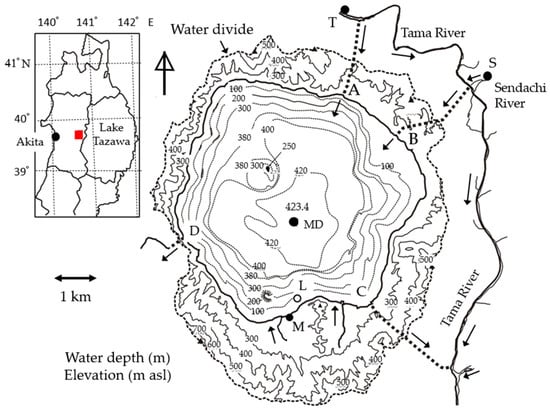
Figure 1
Open AccessArticle
Evapotranspiration Assessment by Remote Sensing in Brazil with Focus on Amazon Biome: Scientometric Analysis and Perspectives for Applications in Agro-Environmental Studies
by
Daniela Castagna, Luzinete Scaunichi Barbosa, Charles Campoe Martim, Rhavel Salviano Dias Paulista, Nadja Gomes Machado, Marcelo Sacardi Biudes and Adilson Pacheco de Souza
Hydrology 2024, 11(3), 39; https://doi.org/10.3390/hydrology11030039 - 08 Mar 2024
Abstract
The Amazon biome plays a crucial role in the hydrological cycle, supplying water vapor for the atmosphere and contributing to evapotranspiration (ET) that influences regional humidity across Brazil and South America. Remote sensing (RS) has emerged as a valuable tool for measuring and
[...] Read more.
The Amazon biome plays a crucial role in the hydrological cycle, supplying water vapor for the atmosphere and contributing to evapotranspiration (ET) that influences regional humidity across Brazil and South America. Remote sensing (RS) has emerged as a valuable tool for measuring and estimating ET, particularly in the data-scarce Amazon region. A scientometric analysis was conducted to identify the most used RS-based ET product or model in Brazil and its potential application in the Amazon. Scientometrics allows for the quantitative analysis of scientific output; this study identified the most widely used RS product in the Amazon biome. Articles published in Web of Science, Scielo, and Scopus databases up to 2022 were searched using the keywords “Evapotranspiration”, “Remote Sensing”, and “Brazil”. After initial screening, 140 relevant articles were subjected to scientometric analysis using the Bibliometrix library in RStudio 2023.06.1+524. These articles, published between 2001 and 2022, reveal a collaborative research landscape involving 600 authors and co-authors from 245 institutions, with most studies originating from Brazil’s Southeast and North (Amazon) regions. Notably, within the 12 studies focusing on ET by RS in the Amazon biome, applications were diverse, encompassing river basins, climate change, El Niño, and deforestation, with the MOD16 product being the most frequently employed.
Full article
(This article belongs to the Special Issue GIS Modelling of Evapotranspiration with Remote Sensing)
►▼
Show Figures
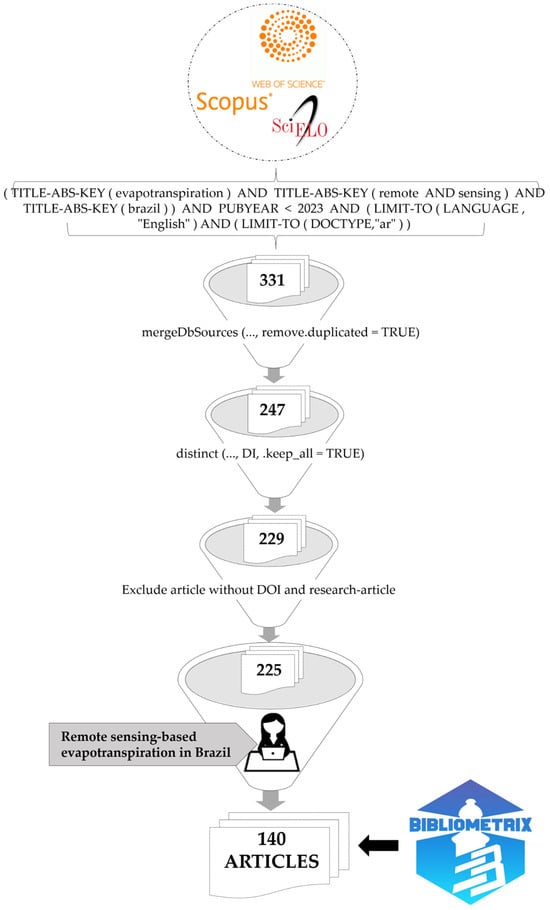
Figure 1

Journal Menu
► ▼ Journal Menu-
- Hydrology Home
- Aims & Scope
- Editorial Board
- Topical Advisory Panel
- Instructions for Authors
- Special Issues
- Topics
- Sections & Collections
- Article Processing Charge
- Indexing & Archiving
- Editor’s Choice Articles
- Most Cited & Viewed
- Journal Statistics
- Journal History
- Journal Awards
- Society Collaborations
- Editorial Office
Journal Browser
► ▼ Journal BrowserHighly Accessed Articles
Latest Books
E-Mail Alert
News
Topics
Topic in
Hydrology, Water, Climate, Atmosphere, Agriculture, Geosciences
Advances in Hydro-Geological Research in Arid and Semi-Arid Areas
Topic Editors: Ahmed Elbeltagi, Quanhua Hou, Bin HeDeadline: 31 July 2024
Topic in
Energies, Hydrology, Remote Sensing, Water, Climate
Climate Change and Human Impact on Freshwater Water Resources: Rivers and Lakes
Topic Editors: Leszek Sobkowiak, Arthur Mynett, David PostDeadline: 30 September 2024
Topic in
Energies, Hydrology, Remote Sensing, Sustainability, Water
Human Impact on Groundwater Environment
Topic Editors: Zongjun Gao, Jiutan LiuDeadline: 15 November 2024
Topic in
Geosciences, Hydrology, Remote Sensing, Sustainability, Water
Advances in Hydrogeological Research
Topic Editors: Karl Auerswald, Jordan ClarkDeadline: 31 December 2024

Conferences
Special Issues
Special Issue in
Hydrology
Advances in Isotope Investigations of Groundwater Resources
Guest Editor: Mahmoud SherifDeadline: 30 April 2024
Special Issue in
Hydrology
Advances in Evaporation and Evaporative Demand: Part II
Guest Editors: Aristoteles Tegos, Nikolaos MalamosDeadline: 22 May 2024
Special Issue in
Hydrology
Editorial Board Members’ Collection Series: Projecting Aleatoric Uncertainty of Temperature—Precipitation and Flows into the Future to Assess Climate Change Impacts and Deciding on Adaptation Measures
Guest Editors: Arona Diedhiou, Ali A. AssaniDeadline: 31 May 2024
Special Issue in
Hydrology
Advances in River and Floodplain Interactions
Guest Editors: Samkele Tfwala, Chingnuo Chen, Su-Chin ChenDeadline: 15 June 2024
Topical Collections
Topical Collection in
Hydrology
Feature Papers of Hydrology
Collection Editors: Ezio Todini, Tammo Steenhuis


